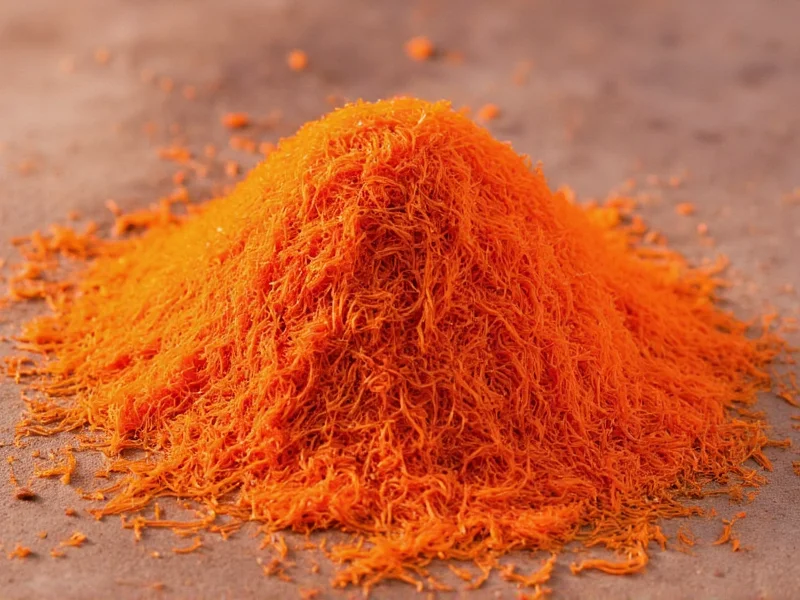Saffron's extraordinary value stems from its labor-intensive harvesting process—each delicate stigma must be hand-picked from crocus flowers, requiring approximately 75,000 blossoms to produce just one pound of dried saffron. This meticulous process explains saffron's status as the world's most expensive spice by weight, yet its potent flavor means only small quantities are needed for significant impact.
The Culinary Dominance of Saffron
While saffron has historical medicinal and dye applications, its primary modern use remains culinary. Professional chefs and home cooks prize saffron for its unique ability to transform ordinary dishes into extraordinary culinary experiences. The spice works particularly well with rice, seafood, and creamy sauces, where its subtle floral notes can shine without being overwhelmed.
When properly used, saffron creates a complex flavor profile that's simultaneously floral, honey-like, and slightly earthy, with a characteristic metallic note that distinguishes it from other spices. Its coloring properties are equally remarkable—just a few threads can transform a dish's appearance, creating that coveted golden hue associated with premium cuisine.
Global Culinary Applications
Saffron's culinary journey spans continents and centuries, with each culture developing distinctive applications that showcase the spice's versatility:
| Region | Signature Dish | Saffron's Role |
|---|---|---|
| Spain | Paella Valenciana | Provides signature golden color and distinctive flavor to the rice base |
| Italy | Risotto alla Milanese | Creates the characteristic yellow color and subtle floral notes |
| Persia/Iran | Tahdig (crispy rice) | Colors the bottom layer of rice and infuses fragrance throughout |
| India | Kashmiri Pulao | Imparts color and delicate aroma to festive rice dishes |
| Sweden | Lussekatter (saffron buns) | Colors and flavors traditional Christmas pastries |
Optimal Saffron Usage Techniques
To maximize saffron's flavor and color potential, proper preparation is essential. The most effective method involves blooming the threads:
- Gently crush 10-15 saffron threads using a mortar and pestle
- Steep in 2-3 tablespoons of warm liquid (water, broth, or milk) for 15-20 minutes
- Add both threads and liquid to your dish during cooking
This process extracts saffron's crocin (color), picrocrocin (taste), and safranal (aroma) compounds more effectively than adding dry threads directly. For best results, add bloomed saffron toward the beginning of cooking to allow flavors to integrate fully.
Traditional Medicinal and Other Uses
While culinary applications dominate modern saffron usage, historical records show traditional medicinal applications across various cultures. Ancient Persian physicians used saffron as a remedy for digestive issues, while Ayurvedic medicine incorporated it for mood enhancement. Modern research continues investigating saffron's potential health benefits, though culinary use remains its primary purpose today.
Saffron also served historically as a textile dye, creating vibrant yellow and orange hues for royal garments. Though largely replaced by synthetic dyes, this application persists in some traditional textile arts. The spice's natural coloring properties still make it valuable as a food-safe alternative to artificial yellow dyes in products like cheese and liqueurs.
Practical Saffron Buying and Storage Tips
When purchasing saffron, look for deep red threads with minimal yellow styles attached, as these indicate higher quality. Proper storage in an airtight container away from light preserves saffron's potency for up to two years. To verify authenticity, place a thread in warm water—it should gradually release color rather than immediately turning the water red (which suggests artificial coloring).
For home cooks exploring saffron for the first time, starting with classic dishes like paella or risotto provides the perfect introduction to this extraordinary spice. The investment in quality saffron pays dividends in creating memorable culinary experiences that showcase why this spice has been treasured for millennia.
What is the most common culinary use for saffron worldwide?
Saffron is most commonly used to flavor and color rice dishes globally, particularly Spanish paella, Italian risotto, and Persian rice preparations. Its distinctive golden hue and floral aroma make it indispensable in these traditional recipes.
How much saffron should I use in cooking?
A general guideline is 10-15 threads (about 0.05 grams) for 4 servings of rice dishes. Saffron is potent, so less is often more—using too much can create bitterness. Always bloom threads in warm liquid before adding to dishes for optimal flavor extraction.
Can saffron be used in sweet dishes?
Yes, saffron works beautifully in sweet applications including Scandinavian saffron buns (lussekatter), Indian milk-based desserts like kheer, and Persian saffron ice cream. Its floral notes complement dairy and sugar while providing natural golden coloring without artificial dyes.
Why is saffron so expensive compared to other spices?
Saffron's high cost stems from its extremely labor-intensive harvesting process. Each crocus flower produces only three stigmas, which must be hand-picked at dawn when the flowers are still closed. It takes approximately 75,000 flowers to yield one pound of dried saffron, making it the world's most expensive spice by weight.
How can I tell if saffron is authentic and high quality?
Authentic saffron consists of deep red threads with minimal yellow styles. When placed in warm water, genuine saffron gradually releases a golden-yellow color over 15-20 minutes. Avoid products that immediately turn water bright red (indicating artificial coloring) or contain excessive yellow parts, which have less flavor and color potency.











 浙公网安备
33010002000092号
浙公网安备
33010002000092号 浙B2-20120091-4
浙B2-20120091-4